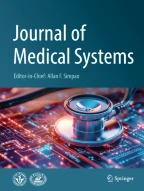Abstract
This paper describes a new method for automatic detection of obstructive sleep apnea (OSA) based on artificial neural networks (ANN) using regular electrocardiogram (ECG) recordings. ECG signals were pre-processed and segmented to extract the P-waves; then three P-wave features were extracted: the P-wave duration (T p ), the P-wave dispersion (P d ), and the time interval from the peak of the P-wave to the R-wave (T pr ). Combinations of the three features were used as features for classification using ANN. For each feature combination studied, 70% of the input data was used for training the ANN, 15% for validating, and 15% for testing the results. Perfect agreement between expert’s scores and the ANN scores was achieved when the ANN was applied on T p , P d , and T pr taken together, while substantial agreements were achieved when applying the ANN on the feature combinations T p and P d , and T p and T pr .
Similar content being viewed by others
References
Penzel, T., McNames, J., de Chazal, P., Raymond, B., Murray, A., and Moody, G., Systematic comparison of different algorithms for apnoea detection based on electrocardiogram recordings. Med. Biol. Eng. Comput. 40:402–407, 2002.
de Chazal, P., Heneghan, C., Sheridan, E., Reilly, R., Nolan, P., and O’Malley, M., Automated processing of the single-lead electrocardiogram for the detection of obstructive sleep apnoea. IEEE Trans. Biomed. Eng. 50(6):686–696, 2003.
Boudaoud, S., Rix, H., Meste, O., Heneghan, C., O’Brien, C., Corrected integral shape averaging applied to obstructive sleep apnea detection from the electrocardiogram. EURASIP J. Adv. Signal. Process. 2007:32570, (2007).
Shamsuzzaman, A., Gersh, B., and Somers, V., Obstructive sleep apnea implications for cardiac and vascular disease. JAMA. 290(14):1906–1914, 2003.
Young, T., Palta, M., Dempsey, J., Skatrud, J., Weber, S., and Badr, S., The occurrence of sleep-disordered breathing among middle-aged adults. N. Engl. J. Med. 328:1230–1235, 1993.
Young, T., Evans, L., Finn, L., and Palta, M., Estimation of the clinically diagnosed proportion of sleep apnea syndrome in middle-aged men and women. Sleep. 20:705–706, 1997.
Boudaoud, S., Heneghan, C., Rix, H., Meste, O., and O’Brien, C., P-wave shape changes observed in the surface electrocardiogram of subjects with obstructive sleep apnoea. Comput. Cardiol. 32:359–362, 2005.
Peker, Y., Kraiczi, H., Hedner, J., Loth, S., Johansson, A., and Bende, M., An independent association between obstructive sleep apnoea and coronary artery disease. Eur. Respir. J. 13:179–184, 1999.
Peppard, P., Young, T., Palta, M., and Skatrud, J., Prospective study of the association between sleep-disordered breathing and hypertension. N. Engl. J. Med. 342:1378–1384, 2000.
Yaggi, H., Concato, J., Kernan, W., Lichtman, J., Brass, L., and Mohsenin, V., Obstructive sleep apnea as a risk factor for stroke and death. N. Engl. J. Med. 353:2034–2041, 2005.
Yumino, D., Tsurumi, Y., Takagi, A., Suzuki, K., and Kasanuki, H., Impact of obstructive sleep apnea on clinical and angiographic outcomes following percutaneous coronary intervention in patients with acute coronary syndrome. Am. J. Cardiol. 99(1):26–30, 2007.
Boudaoud, S., Rix, H., Blanc, J., Cornilly, J., and Meste, O., Integrated shape averaging applied to AF detection. Comput. Cardiol. 30:125–128, 2003.
Boudaoud, S., Meste, O., and Rix, H., Curve registration for study of P-wave morphing during exercise. Comput. Cardiol. 31:125–128, 2004.
Carlson, J., Johansson, R., and Olsson, S., Classification of electrocardiographic P-Wave morphology. IEEE Trans. Biomed. Eng. 4:401–405, 2001.
Dogan, A., Acar, G., Gedikli, O., Ozaydin, M., Nazli, C., Altinbas, A., and Ergene, O., A comparison of P-wave duration and dispersion in patients with short-term and long-term atrial fibrillation. J. Electrocardiol. 36(3):251–255, 2003.
Can, I., Aytemir, K., Demir Deniz, A., Ciftci, O., Tokgozoglu, L., Oto, A., and Sahin, A., P-wave duration and dispersion in patients with obstructive sleep apnea. Int. J. Cardiol. 133:e85–e89, 2009.
Benzadón, M., Ortega, D., Thierer, J., Torcivia, R., Aldunate, L., de Lima, A., Navia, D., Dorsa, A., Rossi, A., and Trivi, M., Comparison of the amplitude of the P-wave from intracardiac electrocardiogram obtained by means of a central venous catheter filled with saline solution to that obtained via esophageal electrocardiogram. Am. J. Cardiol. 98:978–981, 2006.
Turgut, O., Tandogan, I., Yilmaz, M., Yalta, K., Aydin, O., Association of P wave duration and dispersion with the risk for atrial, fibrillation: practical considerations in the setting, of coronary artery disease. Int. J. Cardiol. in press, 2009.
Tsikouris, J., Kluger, J., Song, J., and White, C., Changes in P-wave dispersion and P-wave duration after open heart surgery are associated with the peak incidence of atrial fibrillation. Heart Lung. 30(6):466–471, 2001.
Reynolds, E., Seda, G., Ware, J., Vinik, A., Risk, M., and Fishback, N., Autonomic function in sleep apnea patients: increased heart rate variability except during REM sleep in obese patients. Sleep Breath. 11:53–60, 2007.
Svozil, D., Kvasnicka, V., and Pospichal, J., Introduction to multi-layer feed-forward neural networks. Chemometr. Intell. Lab. Sys. 39:43–62, 1997.
Fausett, L., Fundamentals of neural networks: architectures, algorithms and applications. Prentice Hall, Upper Saddle River, 1994.
Kiymik, M., Akin, M., and Subasi, A., Automatic recognition of alertness level by using wavelet transform and artificial neural network. J. Neurosci. Methods. 139(2):231–240, 2004.
Lalitha, V., and Eswaran, C., Automated detection of anesthetic depth levels using chaotic features with artificial neural networks. J. Med. Syst. 31(6):445–452, 2007.
Yildiz, A., Akin, M., Poyraz, M., and Kirbas, G., Application of adaptive neuro-fuzzy inference system for vigilance level estimation by using wavelet-entropy feature extraction. Expert Syst. Appl. 36(4):7390–7399, 2009.
Cohen, J., A coefficient of agreement for nominal scales. Edu. Physiol. Meas. 20:37–46, 1960.
Sim, J., and Wrigth, C., The Kappa statistics in reliability studies: use, interpretation, and sample size requirements. Phys. Ther. 85(3):257–268, 2005.
Acknowledgement
This work was supported by the German Research Foundation-DFG (Deutsche Forschungsgemeinschaft).
Author information
Authors and Affiliations
Corresponding author
Rights and permissions
About this article
Cite this article
Lweesy, K., Fraiwan, L., Khasawneh, N. et al. New Automated Detection Method of OSA Based on Artificial Neural Networks Using P-Wave Shape and Time Changes. J Med Syst 35, 723–734 (2011). https://doi.org/10.1007/s10916-009-9409-z
Received:
Accepted:
Published:
Issue Date:
DOI: https://doi.org/10.1007/s10916-009-9409-z
